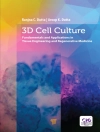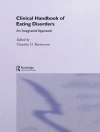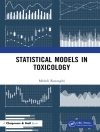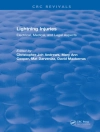Graphic Anaesthesia is a compendium of the diagrams, graphs, equations and tables needed in anaesthetic practice.
Each page covers a separate topic to aid rapid review and assimilation. The relevant illustration, equation or table is presented alongside a short description of the fundamental principles of the topic and with clinical applications where appropriate. All illustrations have been drawn using a simple colour palette to allow them to be easily reproduced in an exam setting.
The book includes sections covering:
- physiology
- pharmacodynamics and kinetics
- physics
- equipment
- anatomy
- drugs
- clinical measurement
- statistics.
Graphic Anaesthesia is therefore:
- the ideal revision book for all anaesthetists in training
- a valuable aide-memoire for senior anaesthetists to use when teaching and examining trainees.
From reviews:
‚
Graphic Anaesthesia is a well-written, easy-to-read book, ideal for trainees studying for primary FRCA examinations… It will be an ideal companion for preparing for exams.‘
Ulster Medical Journal, May 2016
‚
Graphic Anaesthesia is an excellent revision tool that allows trainees approaching exams to prepare in an efficient and simple format. It is a refreshing and unique resource that should be included on any essential revision reading list.‘
European Journal of Anaesthesiology 2016;
33: 610.
‚The diagrams are very clear, the explanations accurate and concise and to pack 245 items into a small reference book is no mean feat…. Each diagram is drawn in just four colours to enable them to be reproduced easily from memory. This intuitive approach was an eye-opener to me and a valuable lesson in simplicity without losing any essential detail. This is something from which many educators could learn and indeed transfer that skill…This is a quality book that could be a useful investment across the spectrum of practitioners involved in anaesthesia and the teaching of anaesthesia.’
Journal of Perioperative Practice March 2017, volume 27, issue 3
Inhaltsverzeichnis
1. PHYSIOLOGY
1.1 Cardiac; 1.2 Circulation; 1.3 Respiratory; 1.4 Neurology; 1.5 Renal; 1.6 Gut; 1.7 Acid–base; 1.8 Metabolic; 1.9 Endocrine; 1.10 Body fluids; 1.11 Haematology; 1.12 Cellular; 1.13 Muscle
2. ANATOMY
2.1 Abdominal wall; 2.2 Antecubital fossa; 2.3 Autonomic nervous system; 2.4 Base of skull; 2.5 Brachial plexus; 2.6 Bronchial tree; 2.7 Cardiac vessels – cardiac veins; 2.8 Cardiac vessels – coronary arteries; 2.9 Circle of Willis; 2.10 Cranial nerves; 2.11 Cross-section of neck at C6; 2.12 Cross-section of spinal cord; 2.13 Dermatomes; 2.14 Diaphragm; 2.15 Epidural space; 2.16 Femoral triangle; 2.17 Fetal circulation; 2.18 Intercostal space; 2.19 Internal jugular vein; 2.20 Laryngeal innervation; 2.21 Larynx; 2.22 Limb muscle innervation (myotomes); 2.23 Lumbar plexus; 2.24 Nose; 2.25 Orbit; 2.26 Rib; 2.27 Sacral plexus; 2.28 Sacrum; 2.29 Spinal nerve; 2.30 Thoracic inlet and first rib; 2.31 Vertebra
3. PHARMACODYNAMICS AND KINETICS
3.1 Clearance; 3.2 Compartment model – one and two compartments; 3.3 Compartment model – three compartments; 3.4 Dose–response curves; 3.5 Elimination; 3.6 Elimination kinetics; 3.7 Half-lives and time constants; 3.8 Meyer–Overton hypothesis; 3.9 Volume of distribution; 3.10 Wash-in curves for volatile agents
4. DRUGS
4.1 Anaesthetic agents – etomidate; 4.2 Anaesthetic agents – ketamine; 4.3 Anaesthetic agents – propofol; 4.4 Anaesthetic agents – thiopentone; 4.5 Local anaesthetics – mode of action; 4.6 Local anaesthetics – properties; 4.7 Neuromuscular blockers – mode of action; 4.8 Neuromuscular blocking agents – depolarizing; 4.9 Neuromuscular blocking agents – non-depolarizing; 4.10 Opioids – mode of action; 4.11 Opioids – properties; 4.12 Volatile anaesthetic agents – mode of action; 4.13 Volatile anaesthetic agents – physiological effects; 4.14 Volatile anaesthetic agents – properties
5. PHYSICS
5.1 Avogadro’s hypothesis; 5.2 Beer–Lambert law; 5.3 Critical temperatures and pressure; 5.4 Diathermy; 5.5 Doppler effect; 5.6 Electrical safety; 5.7 Electricity; 5.8 Exponential function; 5.9 Fick’s law of diffusion; 5.10 Gas laws – Boyle’s law; 5.11 Gas laws – Charles‘ law; 5.12 Gas laws – Gay-Lussac’s (Third Perfect) law; 5.13 Gas laws – ideal gas law and Dalton’s law; 5.14 Graham’s law; 5.15 Heat; 5.16 Henry’s law; 5.17 Humidity; 5.18 Laser; 5.19 Metric prefixes; 5.20 Power; 5.21 Pressure; 5.22 Raman effect; 5.23 Reflection and refraction; 5.24 SI units; 5.25 Triple point of water and phase diagram; 5.26 Types of flow; 5.27 Wave characteristics; 5.28 Wheatstone bridge; 5.29 Work
6. CLINICAL MEASUREMENT
6.1 Bourdon gauge; 6.2 Clark electrode; 6.3 Damping; 6.4 Fuel cell; 6.5 Monitoring of neuromuscular blockade; 6.6 Oximetry – paramagnetic analyser; 6.7 p H measuring system; 6.8 Pulse oximeter; 6.9 Severinghaus carbon dioxide electrode; 6.10 Temperature measurement; 6.11 Thermocouple and Seebeck effect
7. EQUIPMENT
7.1 Bag valve mask resuscitator; 7.2 Breathing circuits – circle system; 7.3 Breathing circuits – Mapleson’s classification; 7.4 Cleaning and contamination; 7.5 Continuous renal replacement therapy – extracorporeal circuit; 7.6 Continuous renal replacement therapy – modes; 7.7 Gas cylinders; 7.8 Humidifier; 7.9 Oxygen delivery systems – Bernoulli principle and Venturi effect; 7.10 Piped gases; 7.11 Scavenging; 7.12 Vacuum-insulated evaporator; 7.13 Vaporizer; 7.14 Ventilation – pressure-controlled; 7.15 Ventilation – volume-controlled
8. STATISTICS
8.1 Mean, median and mode; 8.2 Normal distribution; 8.3 Number needed to treat; 8.4 Odds ratio; 8.5 Predictive values; 8.6 Sensitivity and specificity; 8.7 Significance tests; 8.8 Statistical variability; 8.9 Type I and type II errors












